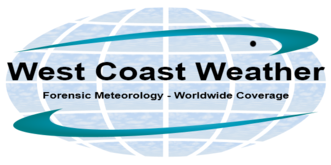Meteorologists and Environmental Laws
By Michael FaginStormwater, Weather ExpertWith 0 commentsForensic meteorologists work with attorneys on litigation issues when weather events have an impact on some of the Washington State environmental laws. In particular we are involved with issues in the construction industry, land use, and with stormwater issues. Attorneys often seek expert testimony from experts like a Certified Consulting Meteorologist regarding the weather at the time of an event.
Construction projects depend on resiliency to landslides. Slopes are particularly vulnerable to erosion, which can cause dangerous environmental conditions and degradation. Wetlands and aquifer recharge areas are also environmentally-sensitive areas.
Land use permits are granted by Washington State. The Office for Regulatory Innovation and Assistance aids with obtaining permits, required buffers and attempted mitigations. Inspections are undertaken to ensure businesses aren’t overly damaging land or water resources.
Industries must obtain and follow best practices under the Construction Stormwater General Permit when managing stormwater runoff, which contaminates swimming waters, degrades drinking water, can damage wildlife habitats and adds to floods. Following mandatory stormwater regulations aids large-scale management.
The Washington Department of Ecology fines environmental rule violators, leading to expensive court cases if contested. Commonly, construction project claims involve fill material and monitoring data. Typical stormwater claims involve discharges into stormwater systems: muddy flows, wastewater or simply excess stormwater.
The Need for Forensic Meteorologists
Forensic Meteorologists are hired by attorneys to provide expert witness testimony regarding the state of the weather during an event. In dangerous weather circumstances, there are reasonable response times to abide by, as well as reasonable safety expectations. If the severity of a storm is very uncommon, such as a one-in-a-hundred year storm, courts might deem the circumstances unreasonable for meeting typical safety expectations.
An example of a case we helped litigate regarded a fine that a construction contractor from greater Seattle received for non-compliance with stormwater discharge regulations. Inspectors deemed the volume of stormwater drainage, a byproduct of their construction practices, was too large. It was understood that heavy rains caused the trouble but it was argued that the company could have helped to prevent much of the runoff. Our meteorologists were able to prove that winter’s rainfall was unprecedented – a so-called one-in-a-hundred year event. Accordingly, it was deemed that the contractors would have been unable to prevent the related damages, so they avoided the fine.
Another attorney representing a sand and gravel firm in eastern Washington hired us to discuss their construction’s effects on the water table. The prospective depth of their dig stirred local concerns that a big pond would be created, which, once exposed to the atmosphere, would evaporate. Locals believed the excavation would lower the water table. The firm’s ability to obtain a building permit hinged on its ability to provide reasonable evidence that the water table wouldn’t drop significantly. Here at West Coast Weather, we looked at old climate data, evapotranspiration rates and ground cover. Then, we consulted with agricultural experts from Washington State University. We were able to show that minimal groundwater would evaporate from the gravel pit. The meteorological insight delivered in court was enough to green light permitting the company.
Article written by Meteorologist Geoff Linsley
